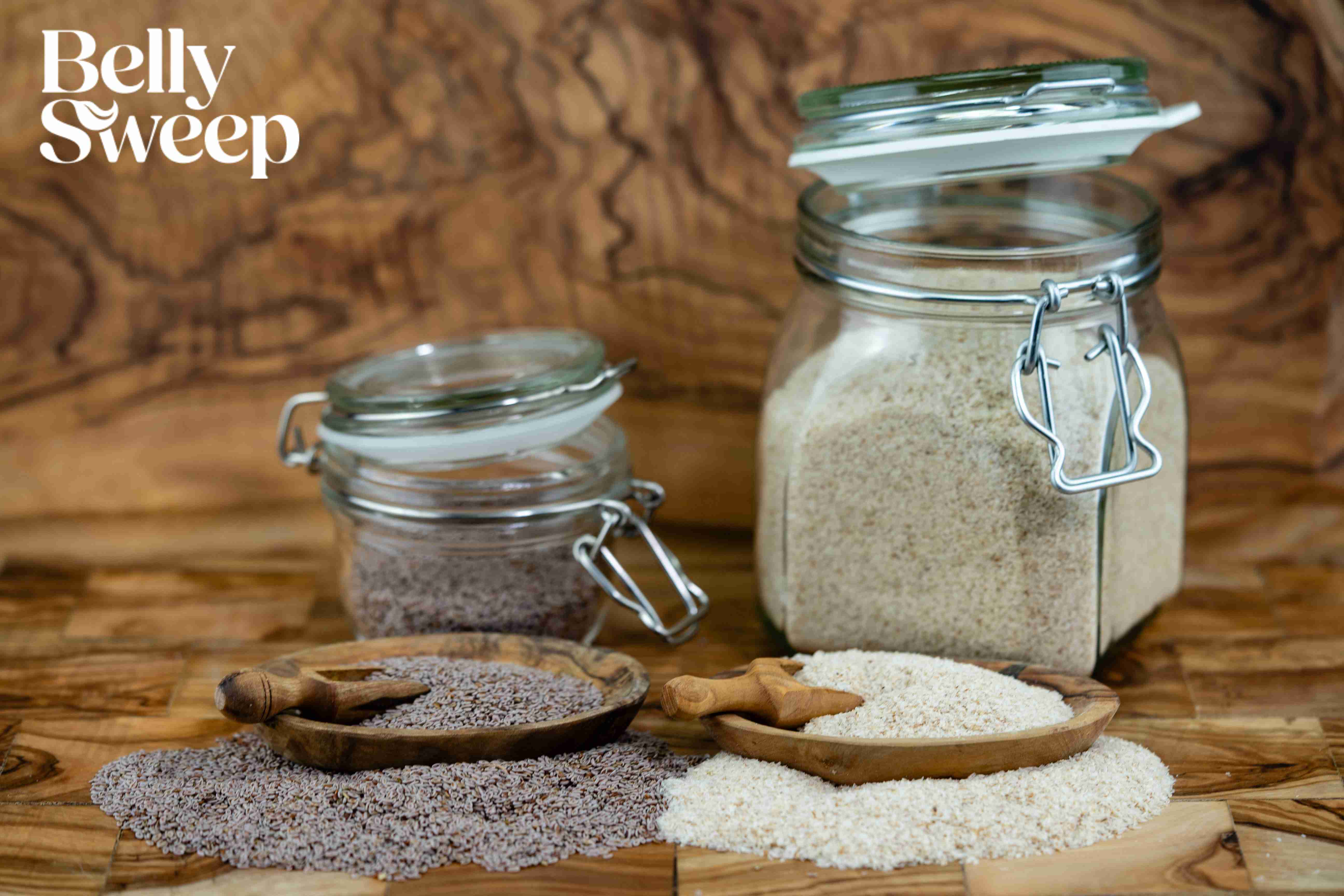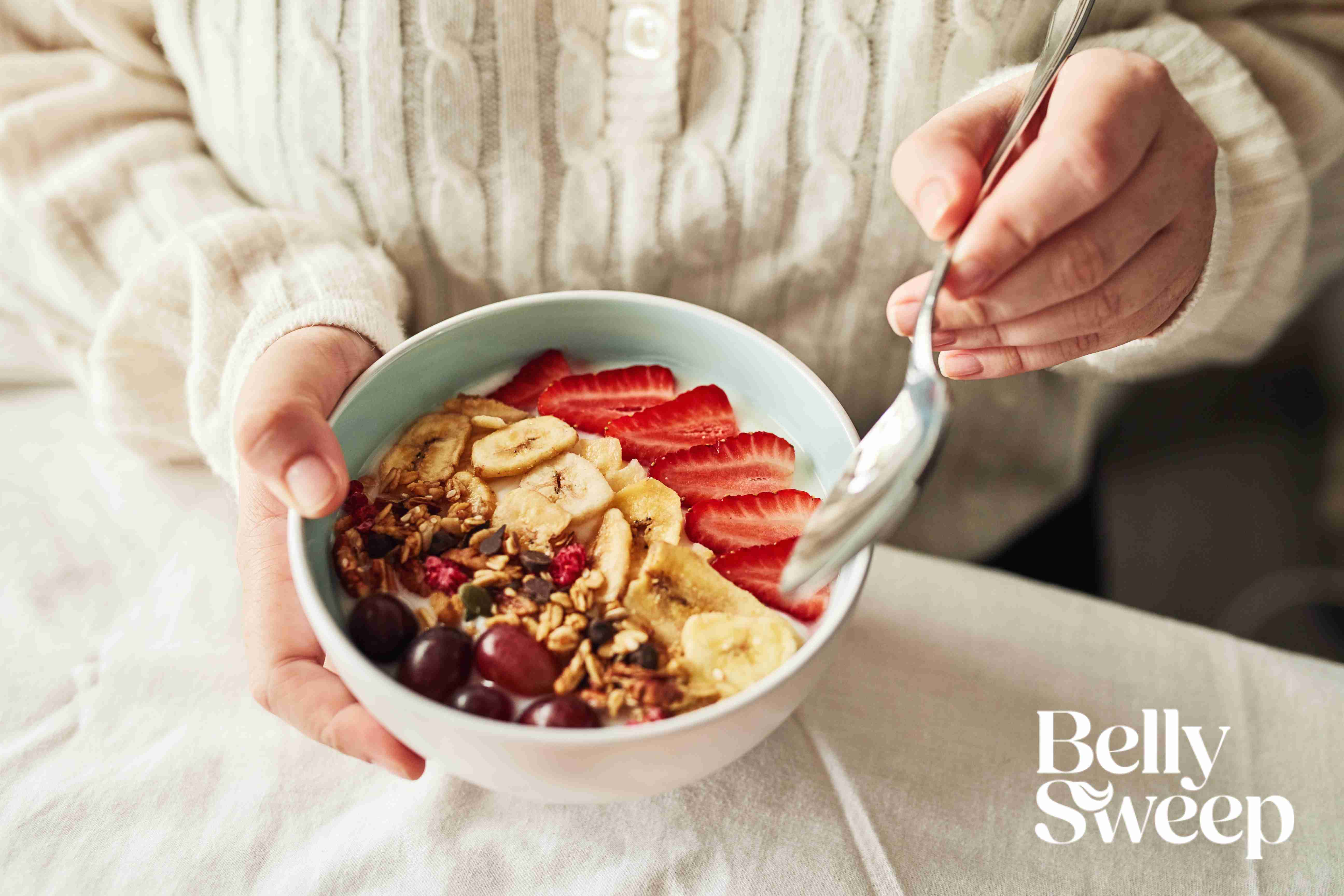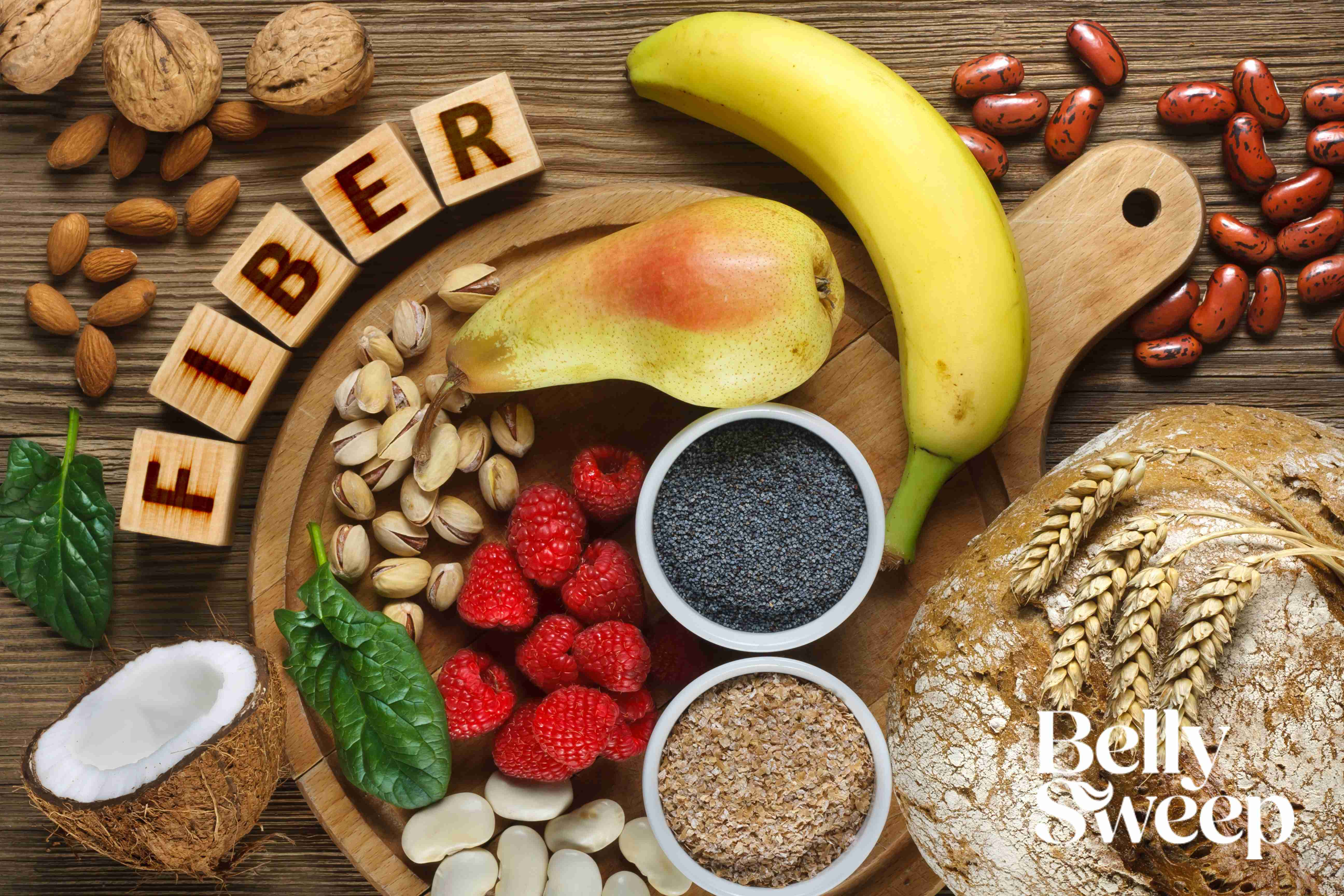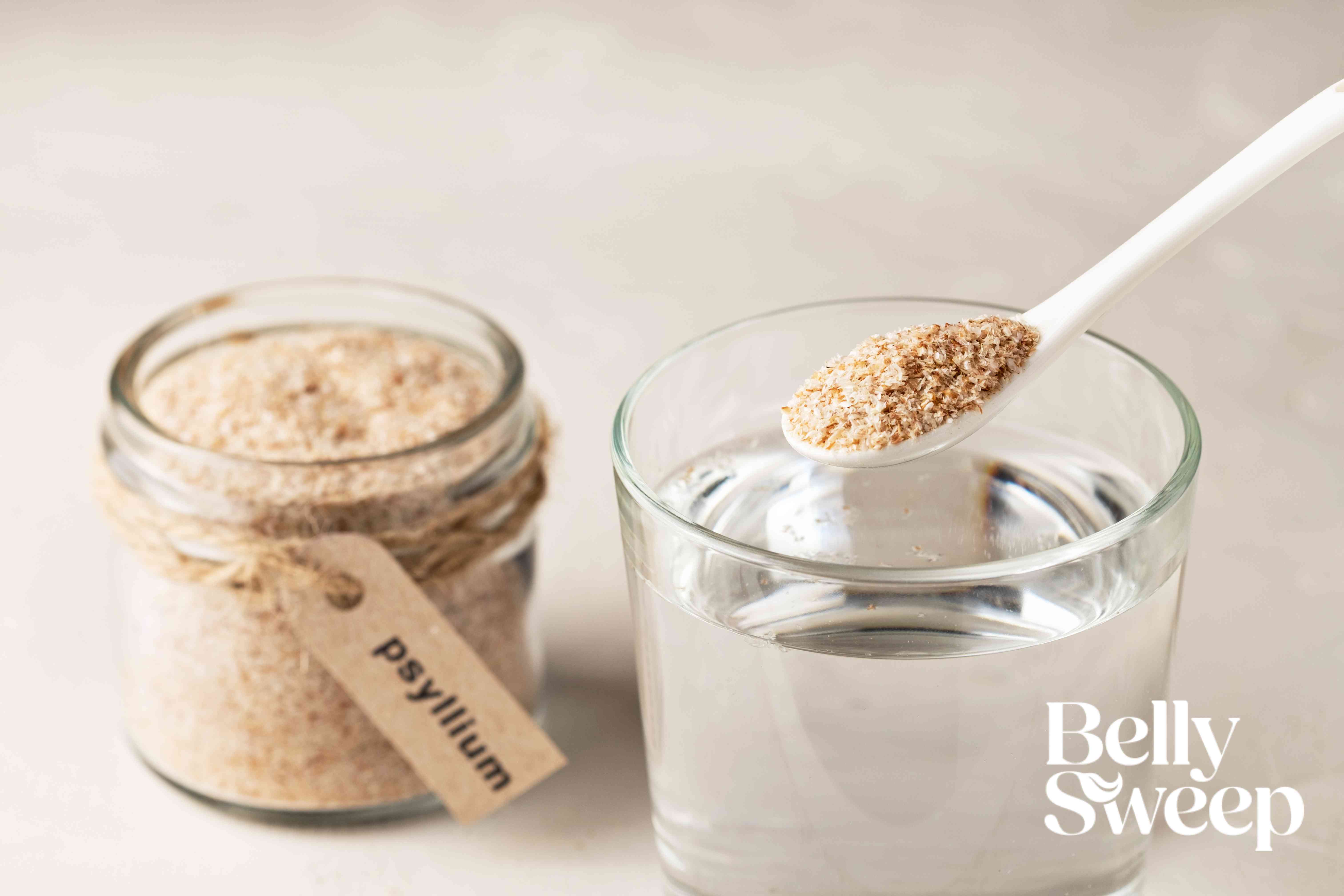Soluble vs. Insoluble Fiber: Understanding the Key Differences
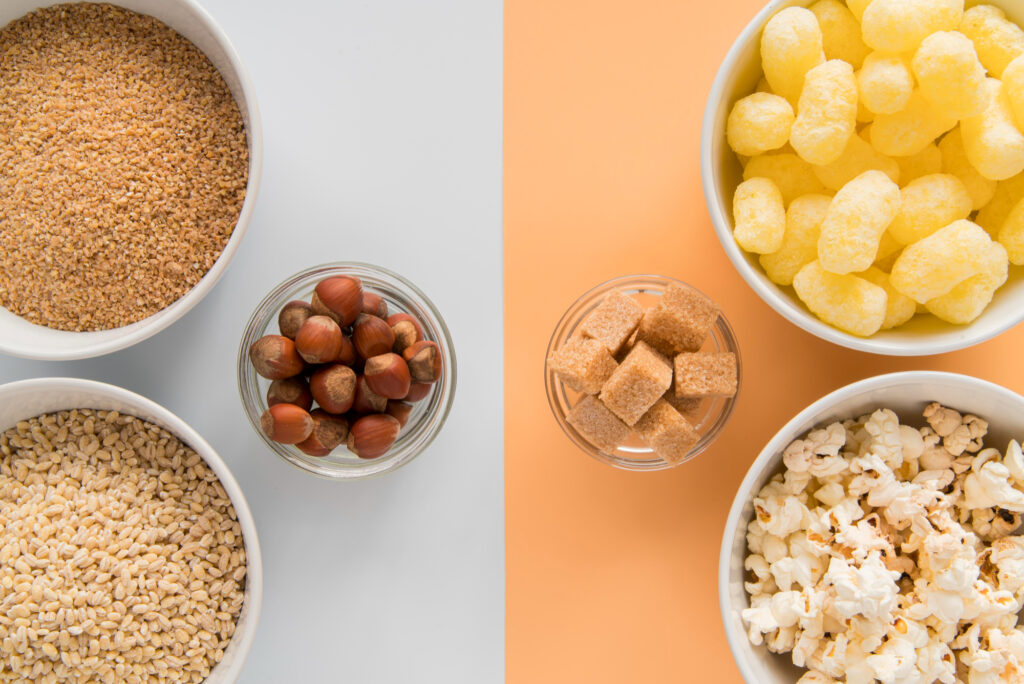
Sat wondering why some foods fill you up all day long while others leave you wanting more? A quick search online will introduce you to the age-old soluble vs. insoluble fiber debate and quite possibly confuse you. Sometimes, you will see the pros and cons of each type and many times, you will be unclear of the basic definitions. Our goal is to clear all of this up in just a few minutes with a handy little guide that will tell you everything you need to know.
Whether you’re unsure of the insoluble meaning as it relates to fiber or you want to know which type of fiber to take, we’re going to guide you through everything you need to know. Why? Dietary fiber will boost your immune response, heart health, and digestion to name just a few of the benefits.
Fiber is largely indigestible natural plant material that passes through your gut during digestion, and it can be either soluble or insoluble. Each of them needs to be present in a particular quantity for you to achieve optimal health, and they each have a specific role to play.
To make sure you know exactly what your body needs, we’re going to take a look at what each type of fiber has to offer and why your body needs it.
Let’s dive right in!
The Two Types of Dietary Fiber
Rather than thinking of it as a soluble vs. insoluble fiber debate, it’s important to remember that your body needs both types of fiber. Just like your body needs more than one type of vitamin or mineral, your body will only thrive when it has the optimal quantity of both types of fiber.
To make some progress in our understanding without getting lost in the details, let’s break things down as we take a look at the different types of fiber.
The Basics of Soluble Fiber
- Soluble fiber is able to dissolve in water and will result in the formation of a gel-like substance that is 100% natural
You will mostly find soluble fiber in lentils, beans, and oats that have not been processed. Soluble fiber is always present in apples and oranges for those looking into the benefits of increasing their fruit intake.
The list of soluble fiber health benefits includes better control of blood sugar, lower levels of potentially harmful LDL cholesterol, and improved heart health. This all adds up to a vital component of any healthy and balanced diet.
We can now highlight the difference between soluble and insoluble fiber by taking a look at the latter.
The Basics of Insoluble Fiber
- Insoluble fiber does not dissolve in water and is what the body uses to bulk out the stool so that it passes without pain or discomfort
Eating plenty of whole grains and nuts will add insoluble fiber to your diet the natural way, as will adding a portion of carrots or green beans to your evening meal. If in doubt, give your body a little bit of everything so that you can diversify the other types of nutrients and micro-nutrients you take in.
Having the optimal level of insoluble fiber in your diet will help your bowels to pass movements with greater regularity, allowing you to expel toxins from the body in the process. You can also combat constipation and pain while simultaneously helping to shape a healthy gut microbiome.
You can use this section to start creating your personalized list of soluble and insoluble fiber foods, taking care to remember it’s not a case of soluble vs insoluble fiber — you need both.
Why You Need Both Types of Fiber
Scientists have long debated the different effects of soluble vs. insoluble fiber and found that the best possible state of well-being is only achieved when both are optimized.
A balanced fiber intake impacts so many different aspects of overall health that its importance cannot be overstated. In fact, even just a quick look at the insoluble meaning in the previous section shows that insoluble fiber helps your body get rid of unwanted substances. This is essential for overall quality of life and could even help with a range of chronic conditions that result from imbalances or inflammation in the gut.
A great example is how you can achieve healthy weight loss by getting the level of soluble vs insoluble fiber right in a holistic way. Rather than optimizing for each in turn, doing so at the same time will help your body strike the balance it has been searching for. A green bean salad followed by an apple at lunchtime will give your body both types of fiber at the same time, as well as a whole host of other essential vitamins and minerals.
Correct supplementation on a mixed fiber basis can also help you optimize for both types of fiber without having to drastically change your typical food intake. This is just one of the creative ways you can add more fiber to your diet and give your body everything it needs to thrive like never before.
Creative Ways to Incorporate Fiber into Your Diet
We’ve taken the time to ask our fiber experts for a few bright ideas that will help you add more fiber to your diet. Because we know that you want to enjoy what you eat and drink, we’ve focused on balancing nutrition and taste, all in a way that won’t significantly change your weekly food budget. Take a look and then decide which one you want to add to your diet first.
Smoothies are great in the morning
Having a freshly made smoothie each morning is a great way to get fiber into your diet without feeling like you’re trying to force down too many new foods. Add a banana to thicken things out, and then focus on fruit and veg rich in fiber to give your gut what it needs. There are so many flavorsome options that you will never be short of ideas.
Baking at home is fun and nutritious
Switching to whole-grain flour will give your bread and cakes a healthy shot of fiber without changing the taste of your homemade favorites. For those who like to get a little more experimental, how about making a carrot cake by grating in a couple of orange veggies?
Snacks can become fiber boosters
While many of us love a soda or a chocolate bar, they’re not as popular with our bodies, not least of all because of the sugar spikes and dips they cause. Switching to nuts or some raw carrot sticks dipped in humus will help your body thrive in a way it hasn’t before.
Meal prepping to get more fiber
One of the most common mistakes we see from people looking to maintain a fiber-rich diet is trying to do too much too soon. Starting off with one change to your diet and then sticking to it for a week or so is always best. You can then start to vary your fiber-rich meals on a weekly basis, ensuring you don’t get bored of having to eat the same thing over and over again.
Planning out what you’re going to eat in the week ahead has a range of benefits:
- You will feel less overwhelmed by having to change your diet because you can break it down into simple steps
- You can save money on your groceries by planning things out and making the most of economies of scale
- You will be able to see when things look like they are too repetitive and change them before you get frustrated
By having an evening a week when you try out an experimental recipe that is high in fiber, you can keep things fresh and interesting. Maintaining motivation is half the battle when it comes to giving your body the benefit of a healthy diet, so put some thought into how you can do meal-prepping work for you and your family.
Supplementation for optimal fiber intake
Others find that using BellySweep as a balanced fiber supplement can help them achieve even better results. While it should never be used to replace your daily intake of food, it can help you top up and optimize your levels of both types of fiber.
BellySweep users often cite challenges posed by restricted diets or allergies as one of the main reasons for choosing to take a supplement. If you feel like you may struggle to eat enough of the fiber-rich foods we have highlighted above, you may find that supplementation is a highly convenient solution.
There are, however, a number of well-documented cases where a high-fiber diet should be avoided. What works for one person may not work for another, and that’s where we will turn our attention next.
When Should I Avoid a High-Fiber Diet?
While our focus so far has been on the benefits of soluble vs insoluble fiber, there may come a time in your life when a high-fiber diet is not the right choice for you. And although understanding the difference between soluble and insoluble fiber can help many people optimize their health and wellness, others will need to avoid both types for a period of time.
Recovering from surgery
Recovery from certain types of surgery (particularly those concerning the gut) will require a lower fiber intake than before. In this case, moving away from typical soluble vs. insoluble fiber ratios and increasing vitamin intake is advised.
Suffering from Irritable Bowel Syndrome
Sufferers of IBS may find that reducing their fiber intake during spikes in their condition can help to reduce discomfort. This is because less fiber means less water being drawn into the gut, allowing things to potentially settle down enough to continue the high-fiber diet.
Undergoing radiation therapy
Radiation therapy is another case where high fiber should be avoided because the body is placed under a prolonged state of significant stress. Discussing when you can resume your high-fiber intake with your physician or oncologist will help you adapt your diet as your body continues to heal.
Specific intestinal issues
Narrowed intestines and gastroparesis (delayed emptying of the stomach into the small intestine) are two conditions that can also be exacerbated by high fiber intake. Speaking with a dietitian about how much you need to reduce your intake by without causing other issues is always the best approach to take.
Rectal medical examinations
If you are due to undergo a colonoscopy where a doctor will examine your rectum and large intestine, they will provide guidance on safely avoiding fiber in the days before the examination.
Having the right information, food, and supplements will help you navigate any of the issues above in a way that is both safe and sustainable. While we have seen firsthand the impact of supplementing for mixed fiber when optimizing overall health, the first port of call is always to speak to a health professional.
Planning with Your Healthcare Team
Anyone can make sweeping changes to their diet only to find they have made the wrong moves before, then giving up a couple of days later. What makes the difference is compounding the positive benefits of small, sustainable changes week after week, month after month. To make sure you get off to the right start, we’ve created a simple step-by-step process that you can work through as soon as you finish reading this article.
Step 1: Speak to a healthcare professional
Consider consulting a healthcare professional, nurse, or dietitian before making significant dietary changes, especially if you have underlying health conditions. Their personalized advice can help ensure your choices are safe and effective.
The more time you can get with your physician, and the more data you can give them about what you eat, the better the results. There is no such thing as the perfect diet — it varies from one person to the next — so try to find someone who believes in the power of customized dieting.
Step 2: Create a list of soluble and insoluble fiber foods
While it might sound like having soluble fiber rather than no fiber at all is better, that’s really missing the point. A healthy, happy life becomes possible when you have a balanced diet that meets the constantly changing needs of your body. Because you need both types of fiber throughout the day, make sure you put them into your body.
We know that this type of free-flowing eating is easier said than done if you don’t know where to get the fiber, so make a list. We’d suggest starting with shortlisting the veggies, fruits, and nuts that you like and then comparing the amounts of both types of fiber in each one. Once you get off to the right start, you’ll be making progress in your overall health before you know it.
Step 3: Build healthy, sustainable habits
A science-backed diet that does everything it needs to on paper is no use if you find that you just can’t stick to it. You want to make sure you still enjoy your food and that prepping and eating doesn’t feel like they are taking over your life. The only way to do this is by starting with little habits and then building on them.
Make a single change after reading this article and then try your best to stick to it for the rest of the week. Once you manage that, make a second change and ensure you stick to it. You’ll soon be able to vary more than one thing a week because you’ll have built a foundation of sustainable habits.
Step 4: Constantly vary your diet
Finding the right balance of soluble vs. insoluble fiber isn’t going to be possible if you eat the same few restricted food groups for the foreseeable future. While the power of routine cannot be overstated, there’s a lot to be said about a diet that moves with the seasons.
If you eat only what is in season then your diet will vary naturally throughout the year without you even having to think about it. Ideal when you want to be able to meet the needs of your body the natural way.
Step 5: Optimize with a fiber supplement
When you feel your diet is in the right place, you could join the thousands of happy people who buy BellySweep to boost their health even further. A supplement should not be used to replace food intake — BellySweep is all about living a happier life by providing an extra helping hand when your body needs it.
Final Thoughts
Your body needs soluble and insoluble fiber to reach its full potential as both of them are essential to your overall health. Trying to eat a varied diet where you take in plenty of each type of fiber before optimizing further with a mixed fiber supplement is the way to approach things here.
If you want to see the difference for yourself, why not accept our challenge and switch to a high-fiber diet today?
We know you can do it!
RESOURCES
Fiber Diet (2024): https://www.medicalnewstoday.com/articles/319176#summary
Incorporate Fiber into your Diet (2024): https://www.mayoclinic.org/healthy-lifestyle/nutrition-and-healthy-eating/in-depth/fiber/art-20043983
When to avoid Fiber diet (2024): https://www.betterhealth.vic.gov.au/health/healthyliving/fibre-in-food

